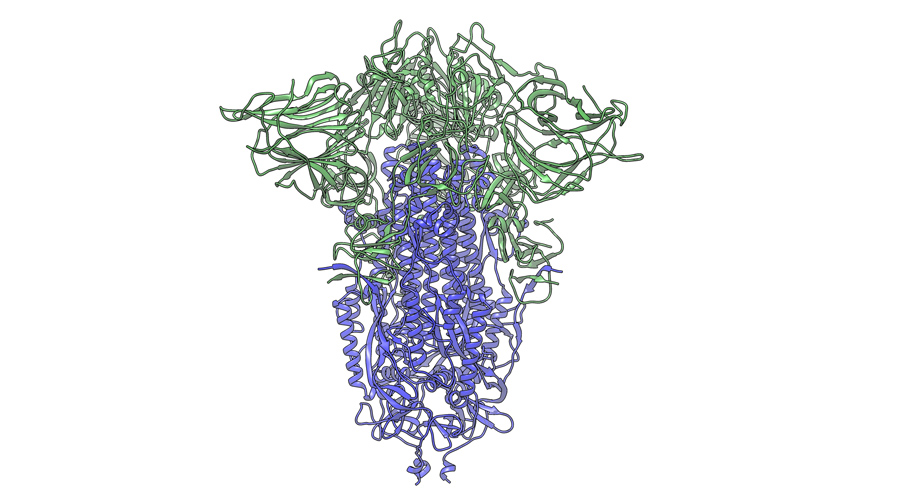A strain of the coronavirus seen in Europe and the United States is significantly more infectious than the initial virus, according to findings from Scripps Research.

Image credits Andrew Ward lab / Scripps Research.
The strain is characterized by a mutation that dramatically increases the number of spike proteins on the virus’ surface, explains senior author Hyeryun Choe, a virologist at Scripps. These spikes represent the biochemical mechanism via which the virus gains entry into human cells.
More of a bad thing
“The number—or density—of functional spikes on the virus is 4 or 5 times greater due to this mutation,” says Hyeryun Choe, PhD.
“Viruses with this mutation were much more infectious than those without the mutation in the cell culture system we used.”
The coronavirus gets its name from these spikes, which resemble a crown. Apart from their aesthetics, these spikes enable the virus to access our cells using the ACE2 receptors on their membrane.
The mutation identified by this study, called D614G, doesn’t directly influence the number of spikes. What it does do, however, is to cause a different amino acid to be used in these spikes — glycine instead of aspartic acid — which makes their structures more flexible. Due to this, more spikes can survive from the moment the virus is produced to when it infects a host as they’re less likely to break off.
So although the mutation acts on the flexibility of these spikes, the net result is a virus that’s much more stable over time and retains a greater ability to infect cells.
No such link has yet been confirmed or infirmed, but the team says that such mutations could help explain why outbreaks in Italy or New York were rampant and quickly overwhelmed the medical resources available, while other areas fared much better, at least initially.
Still, to the best of our knowledge today, the SARS-CoV-2 variant that spread in the earliest outbreaks lacked the D614G mutation, but it is now dominating in much of the world, the team explains. In February, no sequences deposited to the GenBank database showed the D614G mutation. By March, it appeared in 1 out of 4 samples. and in 70% of samples by May, the team reports. ICU data from New York and elsewhere reports a preponderance of the new D614G variant as well, they add.
Mutation is a natural part of biology and that all viruses acquire tiny genetic changes as they reproduce. Most don’t have any bearing on the virus’ ability to infect our cells.
The team further notes that the findings are based in lab experiments with harmless viruses engineered to produce key coronavirus proteins. Further research would be needed to determine whether this mutation also impacts the transmissibility of the virus in real-world situations. For now, however, serum isolated from infected people worked just as well against engineered viruses with and without the D614G mutation, suggesting that potential vaccines should protect against both strains.
It is still unknown whether this small mutation affects the severity of symptoms of infected people, or increases mortality, the scientists say.
The paper “The D614G mutation in the SARS-CoV-2 spike protein reduces S1
shedding and increases infectivity” has been published in the pre-print site bioRxiv and is undergoing peer-review.









